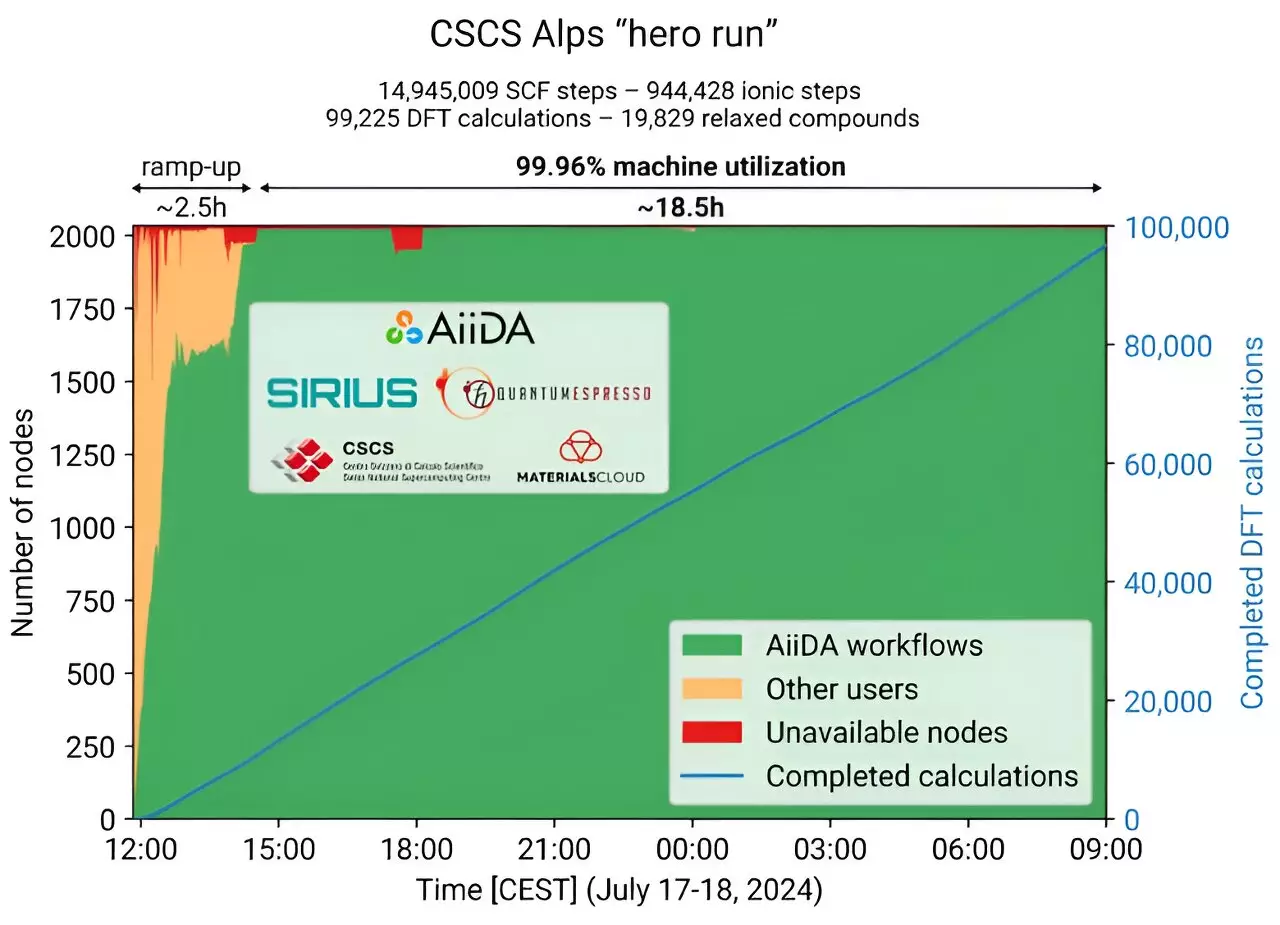On a remarkable July 17 and 18, 2024, a team of scientists from the Swiss National Center of Competence in Research (NCCR) MARVEL embarked on a groundbreaking computational marathon aptly titled a “hero run.” This endeavor was designed not only to demonstrate the prowess of Switzerland’s latest technological marvel—the Alps supercomputer—but also to showcase the advanced capabilities of software tools that facilitate computational materials science. The Alps supercomputer, recently inaugurated in mid-September, signifies a new pinnacle in computational power, rigorously tested through this groundbreaking initiative by researcher Giovanni Pizzi and his team.
The Alps supercomputer stands as one of the world’s most powerful supercomputers, managed by the Swiss National Supercomputing Center (CSCS). It operates from a geographically distributed infrastructure, primarily centered in a cutting-edge data center in Lugano. During its acceptance phase, select research teams were invited to utilize this technological wonder. Among these was Pizzi’s group, based at the Paul Scherrer Institute (PSI), known for employing computational methods to discover new materials with a wide array of applications.
This collaboration highlights a strategic integration of state-of-the-art hardware and innovative software solutions, revealing a collaborative spirit within the Swiss research community aimed at pushing the boundaries of material discovery further than ever before.
Crucial to the success of the hero run was AiiDA, an open-source software tool that automates many of the painstaking calculations necessary to simulate material properties. This interoperability allowed the NCCR MARVEL team to harness the full computational capabilities of Alps through effective task management. By linking AiiDA with the supercomputer, the researchers aimed to conduct high-throughput calculations—an approach that allows for evaluating thousands of material structures simultaneously, thereby accelerating discoveries in fields like battery technology.
Marnik Bercx, one of the leading researchers of the initiative, described the run’s goal as demonstrating that AiiDA could utilize all the nodes of the Alps supercomputer effectively for extended periods, optimizing the workflow of diverse calculations. This capability underscores a notable advancement in computational techniques that can assist material scientists in focusing their experimental efforts on the most promising candidates.
The management of the entire computational process was executed remotely from the PSI server, where AiiDA was pre-installed to prepare input files. When CSCS granted the nod for the run, the team swiftly began submitting these files to the Alps’ scheduling software. This software was responsible for distributing the extensive workload across the supercomputer’s vast resources, comprising over 2000 NVIDIA Grace Hopper nodes and innumerable GPUs and CPU cores specifically allocated for the task.
A remarkable aspect of the run was the surprising stability in the system, with AiiDA handling job submissions autonomously even when the team took brief breaks, highlighting the robustness of both the software and the supercomputing infrastructure.
After approximately 16 hours of intense computational effort, the team successfully completed nearly 100,000 calculations involving the characteristics of various crystal structures extracted from the AiiDA database. This included assessing electronic properties, determining magnetic characteristics, and updating geometrical configurations based on new pseudopotentials.
Through this massive undertaking, the researchers were able to not only execute their calculations effectively but also validate the reliability and efficiency of AiiDA. With a utilization rate nearing 99.96%, the project not only fulfilled but surpassed expectations, showcasing the extraordinary computational environment at CSCS.
The overarching implications of this achievement extend far beyond mere computational success. The ability to conduct such an extensive array of simulations in a condensed timeframe opens limitless potential for future research, particularly in the quest for new materials for modern technological applications. The processed data will soon be made publicly accessible as FAIR (Findable, Accessible, Interoperable, and Reusable) data through the Materials Cloud platform.
As the capabilities of AiiDA marry seamlessly with the technological might of the Alps supercomputer, the landscape of computational materials science is poised for transformative advancements. With opportunities for unprecedented data production and analysis, this collaboration could ultimately redefine how scientists approach material discovery in the years to come.
Indeed, the synergy between superior computing capabilities and innovative software tools has ushered in a new era of exploration, discovery, and innovation in materials science. As the NCCR MARVEL team continues to push the envelope on what is computationally possible, the potential for groundbreaking discoveries remains limitless.


Leave a Reply